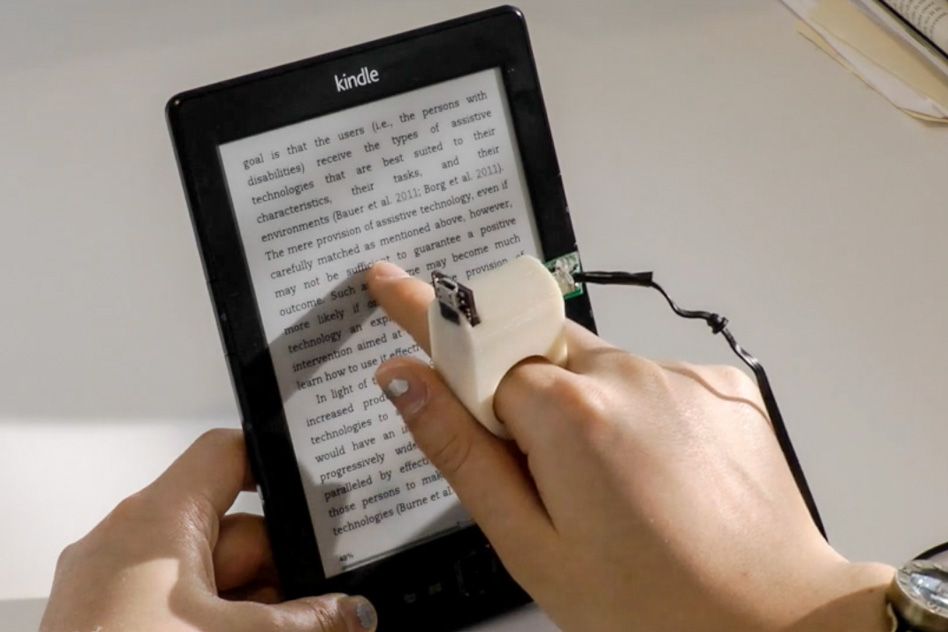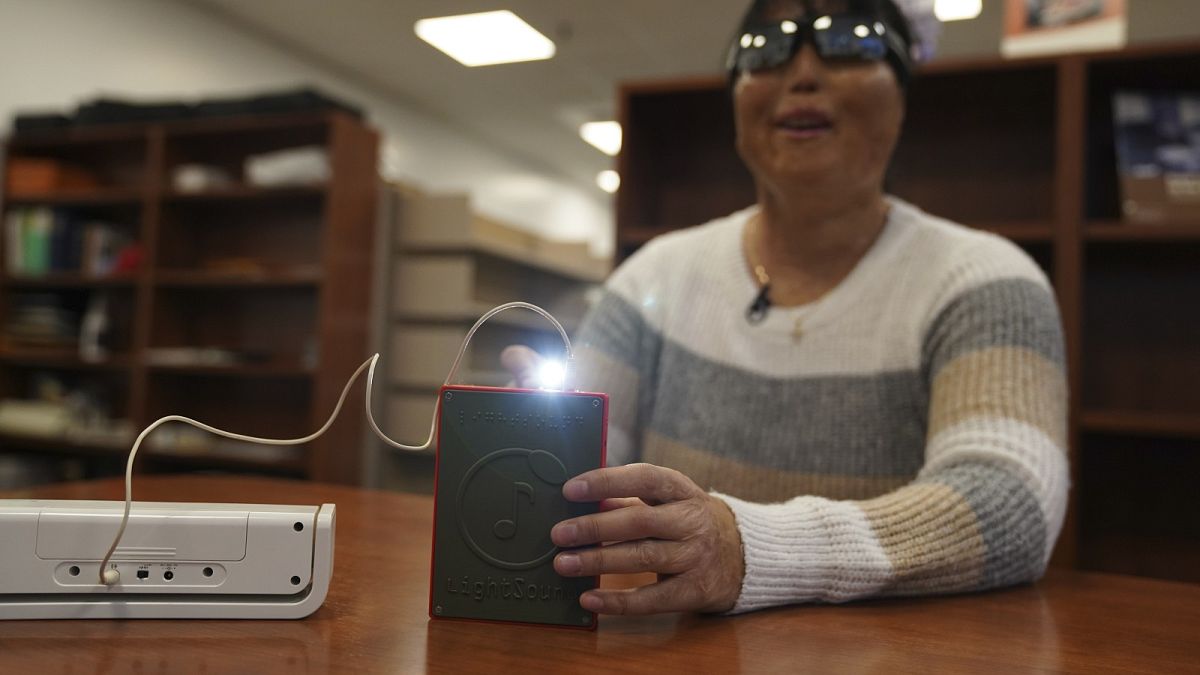OCR Devices for the Blind: Changing Print to Speech in Real-Time
Wiki Article
Empowering Independence With Assistive Modern Technology for the Blind
The combination of assistive innovation into the lives of people with visual impairments represents a substantial improvement in promoting freedom and self-sufficiency. From ingenious display viewers to advanced clever walking canes, these devices not just enhance everyday navigation and interaction however additionally empower users to engage meaningfully in different aspects of life. As we check out the myriad advantages and real-world applications of these innovations, it becomes important to check out the underlying elements that add to their performance and the potential for future advancements in this crucial field.Introduction of Assistive Technology

The development of assistive innovation is based in principles of inclusivity and empowerment. Developments in software program, hardware, and sensory improvements provide users with options customized to their details needs. From screen visitors that convert text to speech, to tactile devices that convey details with touch, these tools change the means people engage with their surroundings.
Along with functional applications, assistive innovation fosters better social addition and involvement in numerous sectors, consisting of education and work (Braille displays and notetakers). As research study and growth continue to evolve, the capacity for assistive technology to better boost the lives of aesthetically damaged individuals remains appealing, leading the way for a more fair culture where every person can grow
Kinds Of Assistive Tools
A variety of assistive tools have arised to support people with visual impairments, each made to fulfill specific requirements and enhance everyday functioning. These tools range from low-tech remedies to sophisticated advancements, offering varied choices for individuals.Low-tech tools include magnifiers and large-print materials that assist in analysis and writing. Braille devices, such as Braille slates and stylus pens, allow tactile reading and interaction. Orientation and movement aids, like white walking sticks, aid individuals navigate their environment securely.
On the higher end of the spectrum, digital zoom systems and screen viewers use considerable support. Electronic magnifiers allow users to enlarge message and photos on displays, while screen readers convert digital web content right into manufactured speech, assisting in access to information on smartphones and computer systems.
Smartphone applications additionally play an important function, offering functions like message recognition and navigating help. Wearable modern technology, such as wise glasses outfitted with increased reality, is emerging as an encouraging tool to boost situational awareness.
Benefits of Assistive Modern Technology
The combination of assistive innovation considerably enhances the lifestyle for people with aesthetic disabilities. These technologies empower customers by promoting self-reliance, allowing them to browse their environments better and perform everyday jobs with higher simplicity. For circumstances, screen readers and zoom software program enable people to access digital information, fostering expert and instructional possibilities that may have previously been out find out here of reach.Furthermore, assistive tools such as wise walking canes and GPS applications provide real-time navigating help, improving movement and safety. This enhanced freedom not just enhances self-esteem however likewise encourages social involvement, enabling individuals to take part more fully in their communities.
Assistive modern technology likewise helps with interaction, aiding customers attach with others with voice acknowledgment and text-to-speech applications. This capacity is crucial for keeping connections and accessing crucial information.
Additionally, the modification choices offered with several assistive innovations guarantee that individuals can customize devices to their certain requirements, further improving usability and effectiveness. Generally, the advantages of assistive modern technology for individuals with aesthetic disabilities are extensive, advertising an extra comprehensive culture where everyone can seek their desires and objectives.
Instance Research Studies and Success Stories
Highlighting the transformative impact of assistive technology, many instance studies highlight just how people with visual impairments have actually effectively integrated these devices right into their lives. One engaging instance involves an university student that made use of display reading software to browse on-line resources and academic materials efficiently. This technology not just promoted her education and learning yet additionally boosted her self-confidence in joining conversations and group projects.Another case research includes a professional that uses a smart device application designed for navigation and object acknowledgment. By utilizing this application, he has actually reclaimed freedom in both his individual and job atmospheres, enabling him to commute separately and engage with colleagues much more successfully.
Furthermore, Visit This Link a retired person shared her experience with braille e-readers, which allowed her to access a huge selection of literary works and stay attached with her community through publication clubs.
These success tales underscore the critical duty of assistive innovation in fostering freedom, boosting quality of life, and advertising social assimilation for individuals with visual disabilities (Wearable technology for low vision). By embracing these ingenious tools, individuals can get over difficulties and seize chances that contribute to their individual and specialist fulfillment

Future Patterns in Assistive Technology
Technology in assistive modern technology is positioned to redefine the landscape of support for individuals with aesthetic impairments. Emerging patterns emphasize the integration of fabricated intelligence (AI) and device understanding, which improve the performance of tools that help with navigation and information access. AI-driven applications are now capable of analyzing visual data in real-time, enabling customers to involve with their atmosphere more separately.In addition, the development of wearable technology is progressing rapidly. Smart glasses geared up with augmented fact (AR) can give audio summaries of environments, transforming how individuals communicate with public spaces. These gadgets not just advertise freedom but likewise foster social addition.
In Addition, the Net of Things (IoT) is making homes smarter, enabling for seamless connectivity in between assistive gadgets and day-to-day devices. This connection encourages users by enabling voice-activated controls and automatic reactions customized to private demands.
Final Thought
Finally, assistive innovation plays an essential role in encouraging people with visual problems by boosting their freedom and interaction with their surroundings. The diverse variety of tools and applications readily available not just promotes navigating and interaction yet also advertises social integration and chances for individual and professional growth. As improvements continue in this area, the potential for improving the lifestyle for those with aesthetic impairments will certainly broaden, promoting better freedom and empowerment.
Report this wiki page